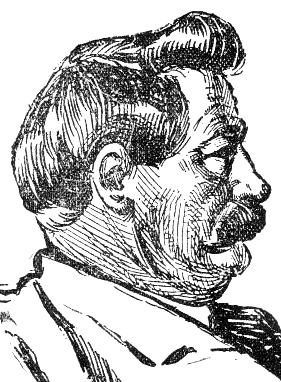
1845 - 1899
Adolph Louis Luetgert
Summary
Name:
Years Active:
1897Birth:
December 27, 1845Status:
DeceasedClass:
MurdererVictims:
1Method:
UnknownDeath:
July 07, 1899Nationality:
USA
1845 - 1899
Adolph Louis Luetgert
Summary: Murderer
Name:
Adolph Louis LuetgertStatus:
DeceasedVictims:
1Method:
UnknownNationality:
USABirth:
December 27, 1845Death:
July 07, 1899Years Active:
1897Date Convicted:
February 9, 1898bio
Adolph Louis Luetgert was born on December 27, 1845, in Gütersloh, a town in Westphalia, Germany. His original name was Adolph Ludwig Lütgert. He was the fourth child in a large family that had a total of sixteen children, including twelve sons and two daughters. His parents were Christian Heinrich Lütgert and Margreta Sophia Severin. Adolph had a twin brother named Heinrich Friedrich "Fritz" Luetgert, who died in the 1890s.
While growing up, Adolph's father worked with animal hides and tallow wool, and also engaged in real estate. Adolph attended school for seven years, which was typical for boys of tradesmen at that time. He finished his education at the age of fourteen. After school, he became an apprentice to Ferdinand Knabel, learning the tanning business. While working as an apprentice, Adolph lived with his boss rather than with his family. After about two and a half years, he left to travel throughout Germany, picking up work wherever he could find it. When he was nineteen, he traveled to London for about six months but left because he could only find work scrubbing restaurant floors.
Adolph immigrated to the United States around 1865 or 1866, when he was about twenty years old. He chose to move because he had heard that many people from his country were finding jobs in America despite having little money. He arrived in New York City with about thirty dollars. After a short stay, he went to Quincy, Illinois, to join friends of his eldest brother. He stayed in Quincy for about four months before moving to Chicago in search of work at a tannery.
In Chicago, Adolph found a job at the Union Hide and Leather Company. Due to the nature of the work, he did not have steady pay, so he took on side jobs as a moving man. He worked at several tanneries over the years, including Engle, Crossley & Co. and Craig, Clark & Company. By the time he returned to Engle, he worked there until 1872. He managed to save four thousand dollars and eventually started his own business, beginning with liquor sales and then creating his own sausage company in 1879.
Adolph married Caroline Roepke on April 13, 1872, in Chicago, Illinois. They had two sons, Max and Arnold, born in 1873 and 1875. Caroline died on November 17, 1877. Adolph remarried on January 18, 1878, to Louisa Bicknese, shortly after Caroline's death. He had a total of six children—two with Caroline and four with Louisa. However, only three of these children survived past the age of two.
murder story
Louisa Luetgert was reported missing on May 1, 1897. Her husband, Adolph Luetgert, told their children that she had gone to visit her sister, but she never returned. After a few days, Louisa's brother, Diedrich Bicknese, went to the police to report her disappearance. Luetgert claimed that she left him for another man.
During the police investigation, it was discovered that the couple had a history of domestic violence. They had frequent arguments. Financial difficulties bothered Luetgert, especially during the Panic of 1896. Reports suggested he was courting a wealthy widow and wanted to marry her after getting rid of Louisa.
On the night Louisa disappeared, witnesses saw her entering the sausage factory with her husband at 10:30 PM. A factory watchman confirmed this. He said Luetgert had sent him on an errand and told him he could take the rest of the night off. Further investigation uncovered that Luetgert had purchased arsenic and potash a day before Louisa vanished.
The evidence led the police to believe that Luetgert killed his wife and disposed of her body in a vat of lye at the factory. They searched the furnace of the factory and found burned sausages and human remains. Two of Louisa's rings, one inscribed with "LL," were discovered among the remains. A forensic anthropologist identified fragments of bone, confirming they were human.
With this evidence, Luetgert was arrested and went to trial. His first trial began in August 1897. The prosecution showed the bone fragments and rings found in the factory as key evidence that Louisa had been killed there. The defense argued that she had left of her own free will and presented claims that she had been sighted in various places. The jury could not reach a unanimous decision, leading to a hung jury.
A retrial took place in January 1898. The prosecution presented George Amos Dorsey, an anthropologist, as an expert witness to confirm that the bones were human. This time, the jury reached a unanimous verdict, finding Luetgert guilty. He was sentenced to life in prison on February 9, 1898. Eighteen months later, on July 7, 1899, Luetgert was found dead in his cell. The cause of death was determined to be fatty degenerative heart disease.
This case was one of the first to receive extensive media attention. Newspapers reported on it daily, making the trial a topic of public interest. The case also marked an early use of an anthropologist in the courtroom as a forensic expert.